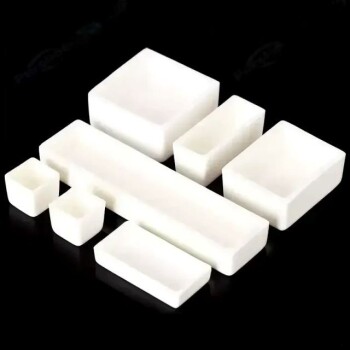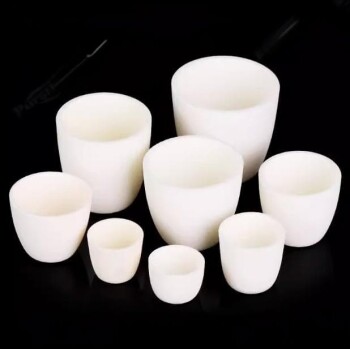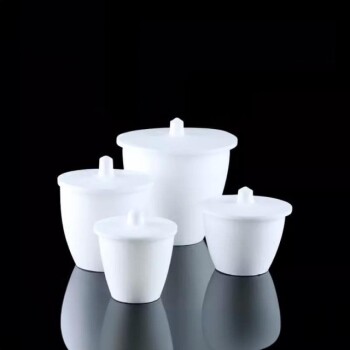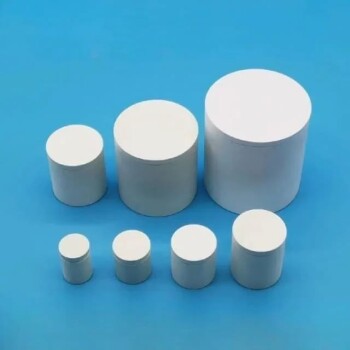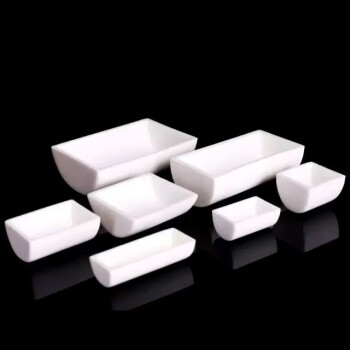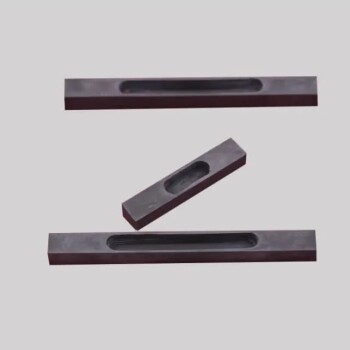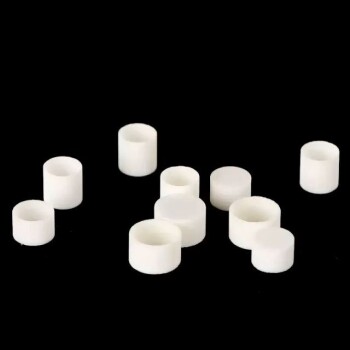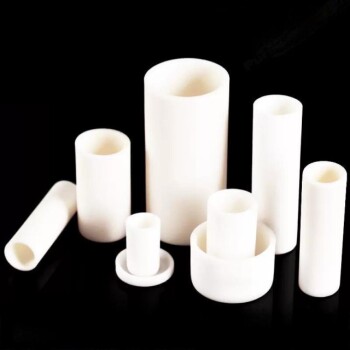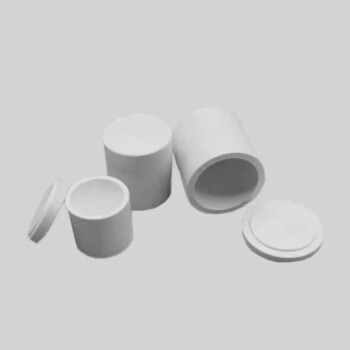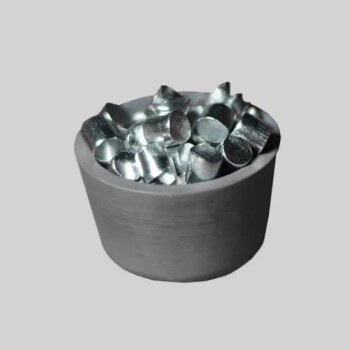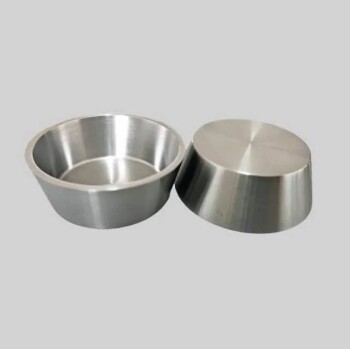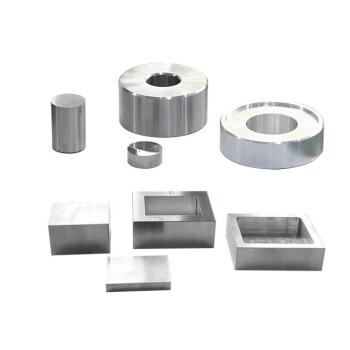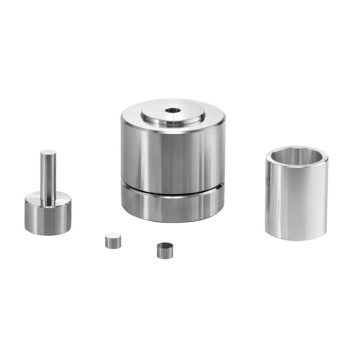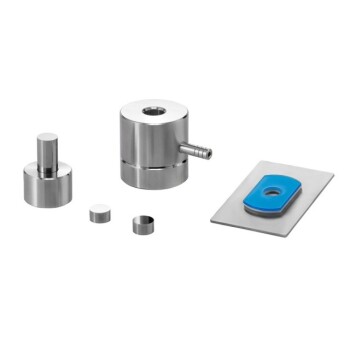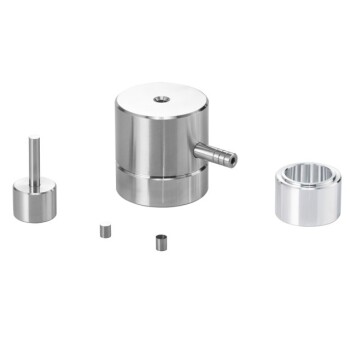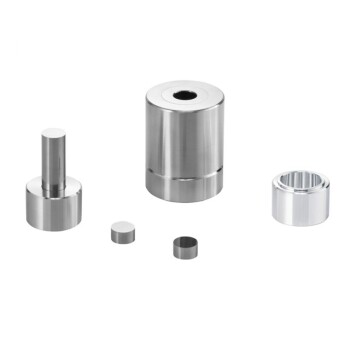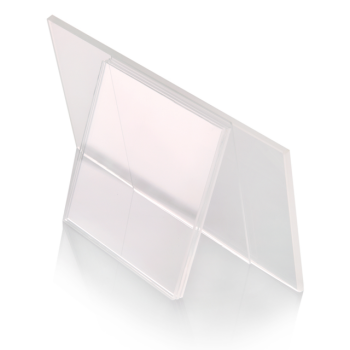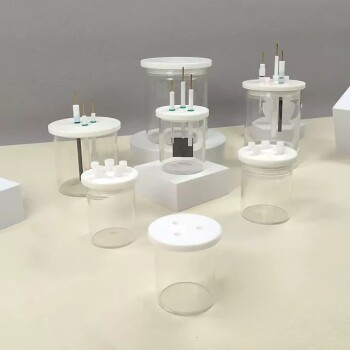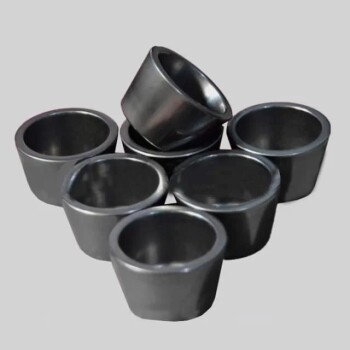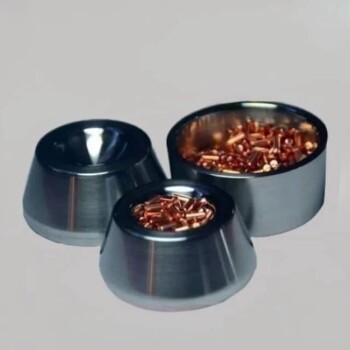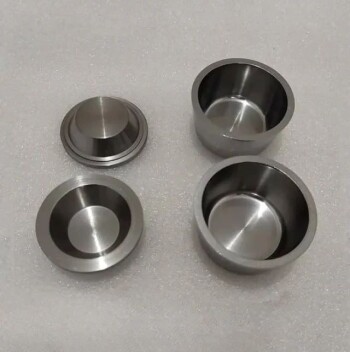Introduction to Fused Silica Crucibles
Properties and Applications
Fused silica crucibles exhibit exceptional thermal stability, characterized by a low coefficient of thermal expansion and superior thermal conductivity. This unique combination of properties ensures that these crucibles remain inert and do not chemically react with silicon at elevated temperatures, making them indispensable in the production of polysilicon ingots. The thermal resilience of fused silica crucibles is crucial in environments where they must withstand temperatures exceeding 1550°C and operate continuously for over 50 hours, as is the case in the solar photovoltaic industry.
In addition to their thermal properties, fused silica crucibles offer excellent dielectric strength, making them effective electrical insulators and light wave reflectors. These electrical and optical properties further broaden their applications, particularly in industries where insulation and light reflection are critical, such as in electrical engineering and aerospace.
The versatility of fused silica crucibles is underscored by their widespread use across various sectors, including metallurgy, chemical processing, and high-tech industries. Their ability to maintain structural integrity under extreme conditions has led to their rapid adoption since their inception. The multifaceted nature of fused silica crucibles ensures that they are not only essential in the solar cell industry but also play a pivotal role in other high-temperature and high-technology applications.
| Property | Description |
|---|---|
| Thermal Stability | Maintains structural integrity at high temperatures (up to 1550°C) |
| Low Thermal Expansion | Minimal dimensional changes with temperature |
| Thermal Conductivity | Efficient heat transfer, crucial for uniform heating |
| Chemical Inertness | Does not react with silicon at high temperatures |
| Dielectric Strength | High, making it an excellent electrical insulator |
| Light Wave Reflection | Effective reflector, useful in optical applications |
The table above highlights the key properties of fused silica crucibles, each contributing to their broad applicability in various industrial contexts. Their robust performance in diverse environments underscores their significance as a critical component in modern technological advancements.
Solar Cell Industry Applications
The solar cell industry has seen a significant emphasis on clean energy solutions, with solar cells playing a pivotal role in this transition. Figure 1-1 illustrates the main classifications of solar cells, highlighting the dominance of polysilicon due to its high conversion efficiency and yield, coupled with relatively low raw material requirements. This material has thus achieved the highest rate of industrialization.
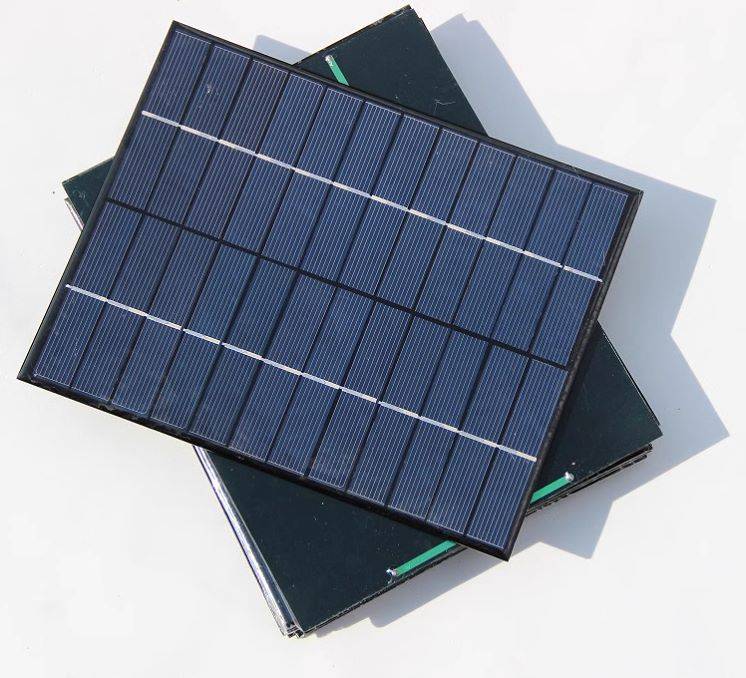
In the solar photovoltaic industry, the fused quartz crucible stands out as a critical component in polysilicon ingot casting technology. Given the predominantly square shape of polysilicon ingots, these crucibles are often referred to as quartz square crucibles. The operational environment for these crucibles is exceptionally demanding, requiring them to withstand temperatures as high as 1550°C and sustain continuous operation for over 50 hours.
| Property | Requirement |
|---|---|
| Temperature Tolerance | 1550°C |
| Continuous Operation | >50 hours |
| Material Purity | High |
The purity of raw materials and the various performance attributes of the quartz crucible are paramount. These factors not only determine the efficacy of polysilicon ingot production but also underscore the crucible's significance within the industry. The stringent demands on these crucibles highlight their indispensable role in ensuring the efficiency and reliability of solar cell manufacturing processes.
Market Trends and Localization Efforts
In the current market, the dominant products are the G5 and G6 series quartz crucibles, with dimensions of 883mmx883mmx420mm/480mm and 1040mmx1040mmx500mm, respectively. The rapid advancement of the photovoltaic industry has propelled the G6 series crucibles into the mainstream demand for multi-product silicon ingot casting. The prevailing trend in quartz crucible development is towards larger sizes and thinner walls, which imposes heightened process requirements on crucible production.
A recent survey by the China Electronic Materials Industry Association identifies six major domestic manufacturers of quartz crucibles, whose production capacities are detailed in Table 1-2. Quartz ceramic crucibles are pivotal consumable components in the solar polysilicon ingot casting process. Despite the high cost of polysilicon raw materials and supply shortages, the quartz ceramic crucible remains the most expensive auxiliary material in polysilicon production, aside from silicon itself. This high cost and reliance on external constraints are significant challenges for enterprises.
Moreover, the substantial proportion of imported crucibles in China underscores the ongoing struggle for many enterprises to achieve crucible localization. The successful localization of crucibles would substantially reduce the production costs of polysilicon ingots, making it a critical goal for the industry.
Preparation Process of Quartz Ceramic Crucible
Slurry Molding
Slurry molding, specifically slip casting, leverages the water absorption properties of porous molds, predominantly gypsum molds. The process involves pouring a specially formulated slurry into these molds, where the water is absorbed, resulting in the formation of a billet with a certain level of strength. This method offers several advantages, including simplicity of equipment, cost-effectiveness, and the capability to produce large-sized, intricately shaped products.
Generally, slurry molding can be categorized into single-sided slurry injection and double-sided slurry absorption. To ensure the production of high-quality billets, the slurry must meet several critical requirements:
- Good Fluidity: The viscosity of the slurry should be low, ensuring easy flow throughout the mold during the grouting process.
- Stability: Consistency in slurry components is crucial to maintain uniformity in the molded billets.
- Thixotropy: The slurry should exhibit a certain degree of thixotropy, meaning its viscosity should not increase excessively over time, facilitating both transportation and storage.
- High Solid Content: A higher solid content in the slurry enhances the strength of the molded billet and reduces shrinkage during drying.
- Effective Filtration: The slurry must allow for efficient water absorption by the gypsum molds.
- Bubble-Free: Prior to grouting, the slurry typically undergoes degassing treatment to eliminate air bubbles.
These properties collectively ensure that the slurry can be effectively molded into high-quality, complex shapes, making slurry molding a versatile and efficient technique in various industrial applications.

Injection Molding
Injection Molding is a process where molten plastic is injected into a mold under pressure, typically using a plunger or screw mechanism. Once the plastic cools, it solidifies, resulting in a product that matches the design of the mold cavity. This method is particularly advantageous for producing parts with uniform structure, precise dimensions, and intricate shapes.
The principle behind injection molding involves melting solid plastic at a specific temperature, then applying pressure to force it into the mold at a controlled speed. The mold's cooling system ensures that the plastic solidifies, replicating the mold's design accurately.
Despite its advantages, injection molding has its challenges. The mold design process is complex, requiring precise engineering to ensure the final product meets specifications. Additionally, the process can be hindered by the presence of organic additives, which are difficult to eliminate during the drying phase.
| Advantages | Disadvantages |
|---|---|
| Produces parts with uniform structure, precise size, and complex shapes | Complex mold design process |
| Suitable for high-volume production | Difficulty in removing organic additives during drying |
In summary, while injection molding offers significant benefits for part production, it also presents technical challenges that must be addressed to ensure optimal results.
Filter Press Molding
Pressure filtration molding (PSC) is an advanced molding technique that builds upon the principles of slurry injection under pressure. This method involves injecting a slurry into a porous mold, where the liquid medium is subsequently filtered out under pressure, resulting in the formation of a shaped blank. While conceptually similar to pressure grouting, which also relies on applied pressure to remove liquid medium from a ceramic slurry, filter press molding employs a significantly thinner porous filter layer. This difference allows for greater flexibility in adjusting the rheological properties and particle gradation of the slurry, making it easier to mold high-performance products.
One of the key advantages of filter press molding is its ability to accommodate a broader range of pressures compared to traditional pressure grouting methods. This adaptability is crucial for molding complex shapes, as it enables the adjustment of model structure and permeability coefficients to achieve varying curing rates across different parts of the mold. By fine-tuning these parameters, manufacturers can ensure a homogeneous billet structure, which is essential for the production of intricate and high-quality components.
In summary, filter press molding offers a versatile and precise approach to ceramic molding, particularly suited for applications requiring complex shapes and high-performance products. Its ability to handle a wide range of slurry properties and pressures makes it a valuable technique in advanced manufacturing processes.
Injection Molding
Injection molding is a sophisticated process that involves the use of molten plastic, which is forced into a mold under pressure to create products with precise dimensions and complex shapes. This method is particularly advantageous for producing components with uniform structures, as it allows for intricate designs that are difficult to achieve through other molding techniques.
The principle behind injection molding is straightforward: solid plastic is melted at a specific temperature and then injected into a mold under controlled pressure. The mold, equipped with a cooling system, solidifies the plastic, resulting in a product that mirrors the design of the mold cavity. This process is highly efficient and is widely used in various industries for its ability to produce high-quality parts in large quantities.
However, the process is not without its challenges. The design and fabrication of the mold can be complex and costly, requiring precise engineering to ensure the final product meets all specifications. Additionally, the presence of organic additives in the plastic can pose difficulties during the drying process, as these additives can be challenging to fully eliminate.
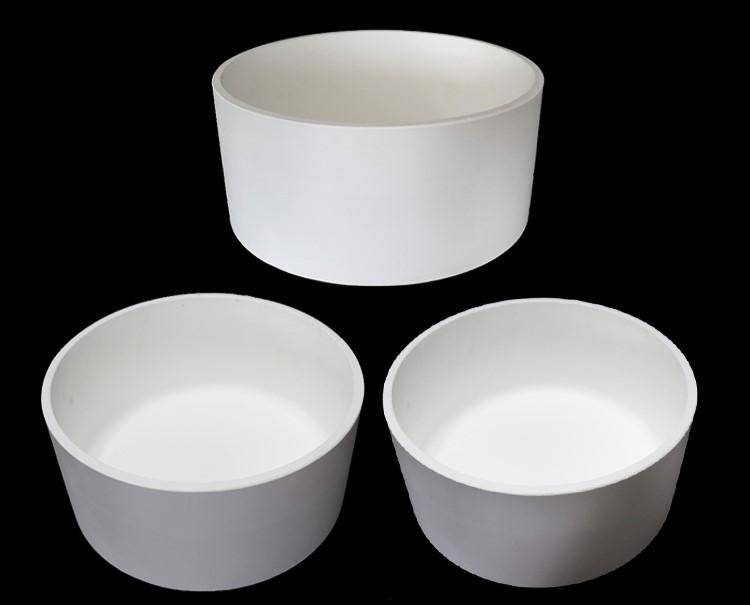
In the context of ceramic production, injection molding has been adapted to create ceramic components through a process known as gel casting. This adaptation leverages the principles of organic polymerization and in-situ curing to form three-dimensional mesh structures that hold ceramic particles in place, resulting in dense and intricately shaped ceramic blanks. The versatility of this method makes it suitable for a wide range of ceramic materials, including quartz ceramics, which are particularly valued for their thermal and electrical properties.
The use of acrylamide as the primary organic polymer monomer in aqueous gel casting is particularly noteworthy. Acrylamide is adsorbed onto the surface of ceramic particles, where it undergoes polymerization in the presence of cross-linking agents, initiators, and catalysts. This reaction leads to the in-situ curing of the particles, creating a robust and dense ceramic blank. The process is highly controlled, ensuring minimal volume contraction and no change in the carrier medium, which is crucial for maintaining the integrity of the final product.
Overall, injection molding, particularly in its gel casting variant, represents a significant advancement in ceramic manufacturing, offering precision, versatility, and the ability to produce complex shapes with high structural integrity.
Related Products
- Engineering Advanced Fine Alumina Al2O3 Ceramic Crucible for Laboratory Muffle Furnace
- Arc-Shaped Alumina Ceramic Crucible High Temperature Resistant for Engineering Advanced Fine Ceramics
- Custom Machined and Molded PTFE Teflon Parts Manufacturer with PTFE Crucible and Lid
- Boron Nitride (BN) Crucible for Phosphorous Powder Sintered
- Alumina Al2O3 Ceramic Crucible Semicircle Boat with Lid for Engineering Advanced Fine Ceramics
Related Articles
- The Role of Laboratory Ovens in Scientific Research and Industry
- Vacuum Induction Melting Furnace vs Arc Melting Furnace: Choosing the Right Equipment for Your Process
- Ceramic Alumina Crucible for Thermal Analysis Test Containers
- Alumina Crucibles in Precision Casting
- Comprehensive Guide to Atmosphere Furnaces: Types, Applications, and Benefits

